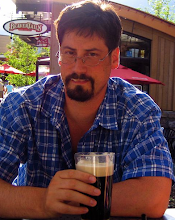| Time | Temperature |
| 0 | 560 |
| 30 | 475 |
| 60 | 410 |
| 90 | 380 |
| 120 | 355 |
| 150 | 350 |
| 180 | 350 |
| 210 | 350 |
| 240 | 350 |
| 270 | 350 |
| 300 | 225 |
| 570 | 110 |
This is light enough that I'll try it brewed again. These beans never exude much oil, I've noticed.
What I might try next time is a lower stable starting temperature and a little lengthier roast. The second roast was at a starting temperature of 525 and a duration of 360 seconds; I'll give 500 a shot and see how it affects the time. The slower roast also seems to allow the temperature to begin climbing again, which has not been the case in these last two. The high flame in roast three also produced a clear bottom and increase. Something cooler, slower, and more controllable, but short of the ten minute hot air popper time, seems like the next step.
Two shots pulled several hours later weren't bad. Certainly more interesting than the darker roasts. This blend is still not close to being my favorite espresso, though.
2009-01-28 update: I was at last able to directly compare the properly rested roast 4 and roast 5. No contest. The lighter roast produces a far more interesting and satisfying straight shot. There are sweet, fruity notes evident almost immediately, and which linger in a long pleasant aftertaste. There is just a hint of this in the darker roast. Certainly the same stuff, just much less of it. I do think the darker roast works better in milk drinks, though.



No comments:
Post a Comment